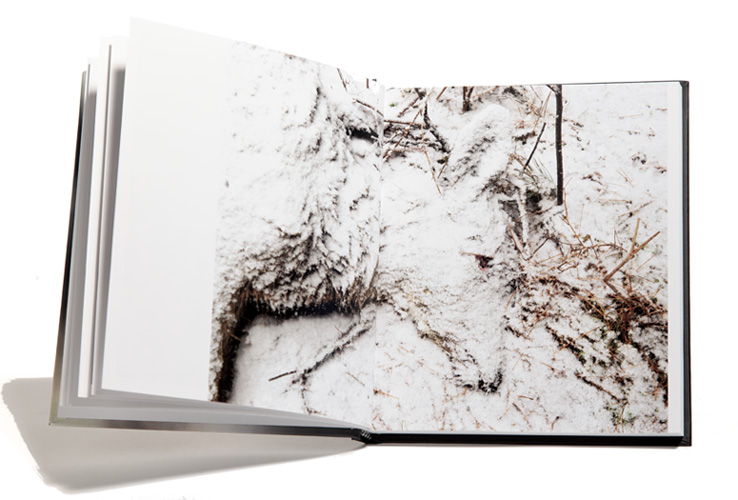Rencontres de la photographie en Gaspésie is pleased to announce the release of the book “Carcasse” by Normand Rajotte, published jointly by Éditions Escuminac (the publishing house of Rencontres) and Diaphane Éditions (France). The launch will be taking place on Thursday, March 23, 2023, from 5:00 to 7:00 p.m. at the Café-Bar in the Cinémathèque québécoise in Montreal.
For more than 20 years, Normand Rajotte has been examining a forest at the foot of Mont Mégantic. There he’s observed and photographed signs of change, from the progress of plant life to the traces left by animal activity. A devoted witness to the place, he captures its clues to occupation and reports on his experience. “Carcasse” is one of a number of photo series he’s taken. His explorations there continue.
In the form of an account, the book takes us to a forest setting and shows us an age-old cycle of animal life recorded by surveillance cameras, added to which are shots captured by the author.
On a certain April 23, seen from a forest road, a crow takes off from the pines, a piece of flesh dangling from its beak. On site, at the center of the wood, lies the half-devoured carcass of a deer, the recent prey of coyotes. Two surveillance cameras will capture the further sequence of events.
Images recorded from April 23, 2015 to March 14, 2016 at the foot of Mont Mégantic in southeastern Québec
The book “Carcasse” will go on sale after the launch at Librairie Le Port de tête, in Montreal, at Librairie Liber, in New Richmond, and online at leslibraires.ca.

About the artist
Normand Rajotte is a Québec photographer whose approach is above all intuitive, focused on a close observation of things, an approach that gradually led him, in the course of his routes traveled, to redefine his relationship with nature. Over time, an intimate connection developed between him and a forest at the foot of Mont Mégantic, which he has explored for upwards of 20 years. The evolution he observes in it goes hand in hand with his own evolution, and indeed is transposed into his work. The challenge, given that the same places are visited again and again, is to take a fresh look. Which is how, from one discovery to the next, on the basis of his research, new avenues appear. He becomes in a manner of speaking a witness to the place and caretaker of traces of presences captured by photography.

